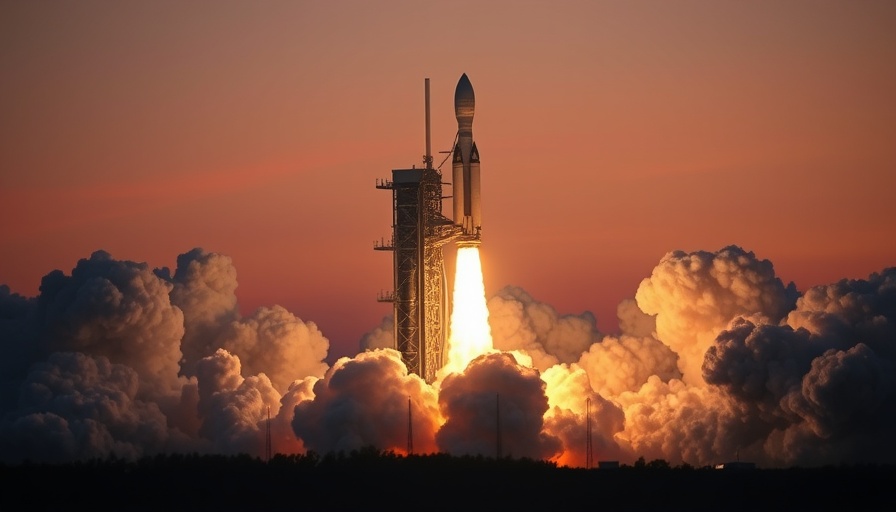
SpaceX's Super Heavy-Starship Launch: A Momentous Achievement
After two significant setbacks in January and March, SpaceX successfully launched its Super Heavy-Starship rocket on May 27, 2025, marking the program's ninth test flight. This latest endeavor is a product of substantial improvements designed to enhance its performance and reliability. Lifted off at 7:37 PM EDT from SpaceX's Starbase in Boca Chica, Texas, the launch faced initial delays, illustrating the complexities involved in launching such a monumental vehicle.
The Technical Marvel of Super Heavy
The Super Heavy booster, which stands 400 feet tall, employs an impressive 33 methane-fueled Raptor engines capable of producing up to 16 million pounds of thrust. For this mission, SpaceX utilized a previously flown first stage, a strategic choice that underscores their commitment to reusability. This first stage was successfully recovered via mechanical arms during an earlier test flight and revealed the company's evolving technological capabilities.
Significant Improvements After Setbacks
In light of the failures experienced during the previous test flights, where dramatic upper stage failures occurred, this launch showcased multiple upgrades. The Super Heavy first stage's flight path was intended to gather more data to improve performance on future missions. Importantly, the design changes were reflective of lessons learned from previous attempts, indicating a robust engineering process aimed at ensuring success.
Future Prospects in Space Travel
Elon Musk, the visionary behind SpaceX, has outlined ambitious plans for interplanetary travel. Following this successful launch, he plans to discuss the future of the Starship program and its role in achieving the goal of making life multi-planetary, specifically through missions to Mars. This ambition is not merely theoretical; it signals a substantive shift in human exploration and the potential for establishing colonies on other planets.
The Complexities of Rocket Recovery
A key aspect of the Super Heavy's design was its recovery strategy. The booster is designed to make a steeper descent path to conserve propellant while gathering data on its flight behavior. This approach reflects a balancing act in aerospace engineering, weighing operational efficiency against the need for rigorous testing to inform future designs. SpaceX's commitment to optimizing performance and recovering hardware epitomizes a forward-thinking approach that sets the stage for subsequent missions.
SpaceX's Impact on the Space Industry
These developments cement SpaceX’s position at the forefront of the aerospace sector, driving competitive innovations amongst its peers. Observers have noted that the advancements in reusable rocket technology exemplified by the Super Heavy program can lead to a paradigm shift in space exploration and commercial operations. With other companies now seeking to accelerate their own capabilities in response, the ripple effects of this mission extend beyond just SpaceX.
Conclusion: Why This Launch Matters
The recent test flight serves as a pivotal moment in the progression of space technology, where the challenges of today pave the way for the explorations of tomorrow. Each successful launch not only advances SpaceX’s objectives but also fuels global enthusiasm for space exploration, potentially inspiring a new generation of engineers and explorers. The world watches as the lines between science fiction and reality slowly blur, setting the stage for humanity’s next great adventure.
 Add Element
Add Element  Add Row
Add Row 



 Add Row
Add Row  Add
Add 


Write A Comment